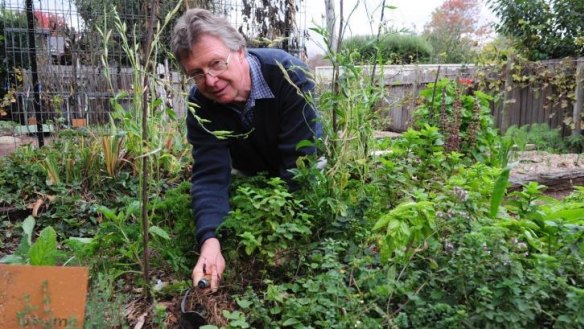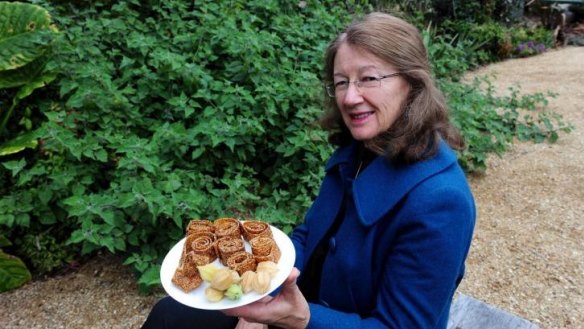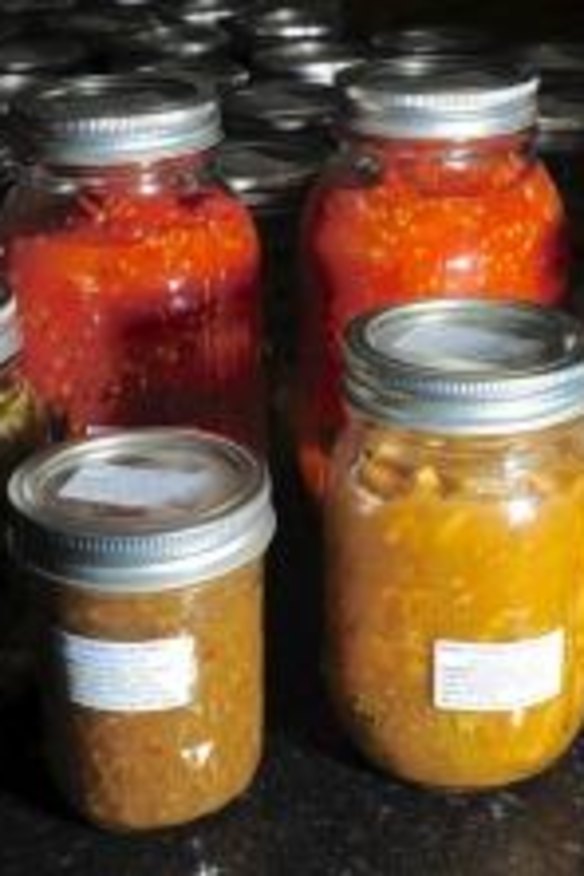Judy and Bill Chaffey preserve the good life at Evatt

There are double rows of red, white and green garlic growing in Bill Chaffey's vast vegetable garden in Evatt, and the bulbs from Ingelara at Michelago were planted last month. Garlic is a favourite among his four plots of herbs in their well laid-out beds which were constructed decades ago. The large block, shared with his wife Judy Chaffey over the past 35 years, attests to Bill's lifelong passion for gardening which started with his father in the Murrumbidgee irrigation area in the Riverina district. He has a certificate in horticulture.
A Meyer lemon tree, one of his first plantings in Evatt, bears huge crops and a recent harvest yielded 30 kilograms. Two dozen broad beans, grown for taste, nutritional values and storage qualities, are germinating in propagation frames with young pea seedlings. A two-year-old asparagus bed promises first spears in springtime. Crops of three varieties of pumpkins and bush snap beans have been harvested, silver beet is being picked, while Blue Lake climbing beans are left to dry on trellises for seed.
The garden beds are irrigated, fed with organic manures and compost from three bins, and mulched with sugar cane which results in minimum weed growth.

Judy Chaffey is also a horticulturist. In the front garden she is growing an astringent persimmon, mandarin, flemings jumbo olive, feijoa, figs, semi-dwarf nectarines, crimson rocket peach, orange and apricot trees. In large individual pots she has ginger, lemongrass, seven types of berries, redcurrants and cherries for their health properties for which Judy refers to American botanist James A. Duke's The Green Pharmacy, Anti-ageing Prescriptions (2001). Animal manures, compost teas and potassium are added to the soil surface.
In one season a cape gooseberry (Physalis peruviana) has taken over an area near a garden bench and Judy uses the berries from its papery lanterns to make a delicious fruit leather mixed with chia seeds which immediately thicken the mixture.
This past season Bill has experienced a long harvest of heirloom tomatoes, ponderosa and early-fruiting kotlas, plus the variety known as "money maker" and two varieties of roma. However it was a good supply of green tomatoes in 2011 that saw him focus on preserving. He has rows of preserved green beans, tomatoes in their own juice, chutneys and pickles in matching Ball's glass jars. With a long held desire for green tomato pickles like his mum made, after some experimenting he found the perfect recipe on the Australian Women's Weekly website in 2011.

Traditional green pickles
2kg green tomatoes, chopped
1kg onions, peeled and chopped
1 medium cauliflower, chopped into flowerets
1 medium cucumber, peeled and chopped
2L water
¼ cup salt
75g plain flour
500g firmly packed brown sugar
1½ tsp dry mustard
2 tsp turmeric
¼ tsp cayenne
1 tsp curry powder
625ml brown vinegar
Put all the vegetables into a very large bowl, pour the water over them, add salt, stir until combined. Cover and stand overnight. Next day put the vegetables and all the liquid into a very large pan. Bring to the boil and boil uncovered for two minutes, drain.
Return vegetables to the pan. In another saucepan place flour, brown sugar, mustard, turmeric, cayenne and curry powder. Stir until combined. Gradually add vinegar. Mix to a smooth paste.
Stand the saucepan over heat, stir until sauce boils and thickens. Reduce heat, simmer for two minutes, remove pan from heat. Gradually add brown sugar mixture to vegetables, stir until combined. Return pan to heat, stir until mixture boils, boil for three minutes, remove pan from heat. Pour mixture into hot sterilised jars; seal. Makes about two litres.